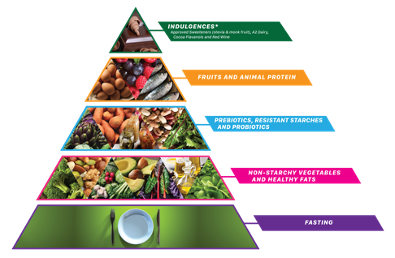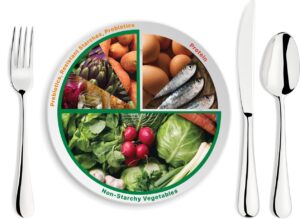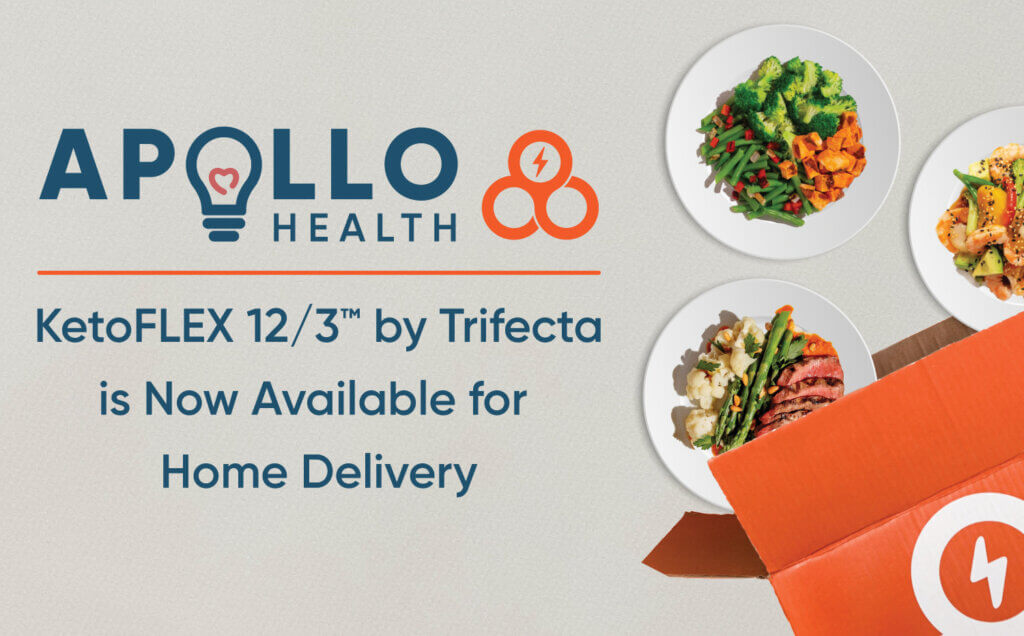March 17, 2023
But What do I Eat?


By Julie Gregory, Chief Health Liaison for Apollo Health
This is one of the most common questions we get from participants. Many are eager to dive into the protocol but get confused when it comes to diet. Once they hear the “keto” part of KetoFLEX 12/3, visions of bacon-wrapped cheese, slabs of ribs, and dollops of butter and heavy cream immediately come to mind. Our version of keto is very different. We take the best of many diets (Mediterranean, MIND, Paleo, DASH, Pegan, etc.) and roll them into an approach that harnesses multiple mechanisms to heal underlying chronic diseases and supply your brain with the nutrients it needs for optimal performance.
Brain Food Pyramid

So, what exactly is KetoFLEX12/3?
KetoFLEX 12/3 is a diet (that becomes a lifestyle) to optimize cognition. The name itself is a mouthful. I’ll start by breaking down each part to help you understand the underlying mechanisms that we use to support brain health.
● Keto refers to ketosis, the process by which your body uses dietary fat and breaks down stored body fat to use as fuel. An inability to effectively use glucose as brain fuel precedes and accompanies the development of Alzheimer’s disease. To learn more about how and why ketosis helps, see The Importance of Ketosis for Brain Health.
● FLEX refers to two concepts. The first is metabolic flexibility, the ability to use both glucose and fat as fuel. While our initial goal is to remind our bodies how to get into natural or endogenous ketosis, our long-term goal is to reclaim our metabolic flexibility to optimize the fuel supply to our brains. The second concept refers to a flexitarian diet in which meat is optional.
● 12/3 refers to the minimum amount of time spent fasting. We advise a minimum twelve-hour fast, including the period of time that you’re sleeping, beginning at least three hours before bedtime to promote autophagy, a cellular housekeeping process vital for health optimization. See Cognitive Restoration Through Fasting to learn more.
Daily Food Intake

Still wondering what to eat?
It’s one thing to learn about the scientific underpinnings of the diet and a very different thing to translate that into actual meals. The plate diagram above can help you visualize the foods that will make up your daily intake on KetoFLEX 12/3. You’ll notice that three-quarters of the plate is comprised of vegetables. Yes, vegetables! These phytonutrient powerhouses are vital for brain health. They not only supply specific nutrients and fiber to promote detoxification, but they also provide the building blocks to cultivate a healthy gut microbiome that can influence brain health.
● Vegetables Freely indulge in non-starchy vegetables from every color of the rainbow, preferably organic, local, and seasonal when possible. Enjoy some cooked (especially steamed) and some raw. You might have to slowly increase your vegetable intake, especially if you had previously eaten more processed and refined foods that are essentially predigested. Vegetables are rich in fiber and require your gut to work much harder the way it was originally designed to operate. Go at your own pace and use bitters (such as rosemary, ginger, fennel, turmeric, and lemon peel) and digestive enzymes when necessary to support this transition. Keep in mind that cooked vegetables are generally easier to tolerate. See Celebrate Spring Vegetables for a healthful technique to make delicious roasted vegetables. Other flavorful options to increase vegetable intake include stir-fries, salads, soups, crudités with dips, and even veggie smoothies.
● Prebiotics, Resistant Starch, and Probiotics This winning triad (primarily comprised of more vegetables) specifically optimizes gut health which is fundamental for brain health. Indeed, the gut and brain share a strong bi-directional relationship. By including these foods in your diet, you can optimize both. Some amount of prebiotic fiber can be found in almost all non-starchy vegetables, while others are particularly rich, such as jicama, asparagus, leeks, garlic, and dandelion greens. Prebiotic fiber feeds the healthy bacteria in your gut. It needs adequate nourishment to flourish. Resistant starch is another important component to support gut health and more. This specialized starch resists digestion in the stomach and is instead digested in the colon, creating by-products to optimize the overall health of the gut. We encourage small amounts that can be found in colored tubers, lentils, legumes, unripe plantains, and green bananas (great in smoothies). Finally, small amounts of probiotic foods, like fermented veggies, kimchi, sauerkraut, low-sugar kombucha, yogurt, and kefir, can directly increase and diversify the healthy bacteria in your gut on a long-term basis. See Fermented Foods, Gut, and Cognition for more.
● Protein It’s important to consume an adequate amount of protein, but too much can impede autophagy. Those over 65, as well as those who are underweight or who have impaired gut health, may need higher amounts. Our top protein picks for brain health include low mercury, wild-caught seafood for DHA, and pastured eggs for choline, both vital for optimal brain functioning. To learn more, see The Best Animal Foods for Cognition. For those who prefer to eliminate animal products, we also offer instructions on how to meet these and other important nutrient goals in the book The End of Alzheimer’s Program or in an educational guide for Apollo Health subscribers entitled KetoFLEX 12/3 for Vegans and Vegetarians.
● Healthy Fat While you may not see the fat on our plate diagram, it’s there! In fact, because fat is so calorically dense, it often makes up our largest macronutrient category. Fats, however, are somewhat hidden on the plate as they’re typically used to season and finish cooked vegetables and salads. You can liberally enjoy approved healthy fats within the context of the KetoFLEX 12/3 approach. Healthy fats help to promote the creation of ketones to fuel your brain. The quality of the fat we consume contributes to the functionality of brain structures. Indeed, our brains are comprised of 60 to 70% fat. The fat serves to support neurons, mitochondria, myelin sheath (insulation for nerve conduction), and other structures.
I’ve experienced the transformational power of food as medicine firsthand. It’s an integral part of what has healed my cognition and continues to sustain my recovery. KetoFLEX 12/3 can be joyful, delicious, nurturing, and fun. Rather than focusing on the foods you can no longer eat, focus on the foods you can eat. See Allow Spring to Awaken Your Inner Chef for ideas on how to get started. For detailed instructions on how to implement this nutritional approach, see KetoFLEX 12/3. Apollo Health subscribers can see From Pyramid to Plate for insider tips.






